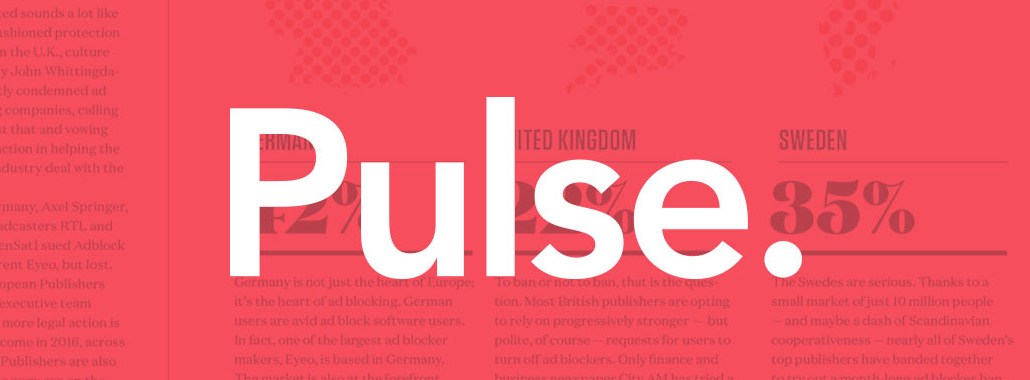
Recently, a publishing executive I know well asked me a simple question: “The magazine — why? Are you crazy?” And this is a publisher with a magazine. I’d like to think we’re not crazy. In fact, that you’re reading this makes me think we’re not.
Digiday Pulse is now two issues old. We’re still finding our way in the print world. A few of us came from print — fled might be the better verb — but for most of our staff, a magazine is something new. We’re enjoying the hard work of putting together a magazine, and what we’re finding is the publication allows us, really forces us, to go out of our comfort zones.
That’s how Lucia Moses ended up profiling Roi Carthy, marketing chief of ad blocker Shine and someone we long joked must be the most hated man in advertising. Pulse was also the impetus for Garett Sloane to finally do the “nerds of advertising” piece he’d long threatened. And the same goes for me. As an editor, I don’t get to write much anymore. The rigor of print forced me to take a hard look at programmatic and come back with a manifesto of how to make it better. We also got a chance to spend a day in the life of Shingy.
Programmatic is the theme for this issue. You’ll find pieces from Yuyu Chen on about the perils of brands taking programmatic in-house, a look by Tanya Dua of how agencies are scrambling for ad tech talent, and Lucia Moses takes us inside Mitch Oscar’s “programmatic cabal.”
Programmatic media — the application of data and automation — is without a doubt a work in progress. Its many flaws — fraud, viewability, data hogging, commoditization — are well-known. That’s why we took a stab at a programmatic manifesto, a simple blueprint for correcting flaws in the system so programmatic media can live up to its promise. As 360i chairman Bryan Wiener told me, “It’s a snowball rolling downhill. We’re not going back to insertion orders.”
At Digiday, we believe in honesty about what’s working and what’s not. But ultimately, we’re optimists that the collision of media and technology will lead to a more perfect media world, where great content is rewarded and marketers achieve their goals.
Now for the pitch: Digiday Pulse is a subscription product, costing $100 for an annual subscription. We have 15 journalists now, a presence in New York, London and Tokyo, and ambitions for much more. Digiday makes money in several different ways, but we know direct revenue from readers is critical to doing more. You can find out more and subscribe here.
Next issue of Digiday Pulse, which will come out in September, is focused on video. We’ll dive into why digital publishers are pivoting to video, the surge of live video on Facebook, and the continued challenges with video ad quality.
I hope you enjoy this issue of Pulse. As always, please get in touch with any feedback you have.
If you enjoyed this sneak peek at the programmatic issue of Pulse Magazine, get your yearly subscription here.
More in Marketing

Pitch deck: How Amazon is recasting Twitch as a core part of its CTV pitch
Amazon is positioning Twitch as a defining asset in its CTV ambitions.

Netflix transforms former mall department stores into experiential venues
The location in Dallas opens this week, and one at the King of Prussia mall near Philadelphia opened last month.

Future of Marketing Briefing: AI has created a new talent paradox in programmatic agencies
The job isn’t execution anymore. AI handles that. The job is judgement.





